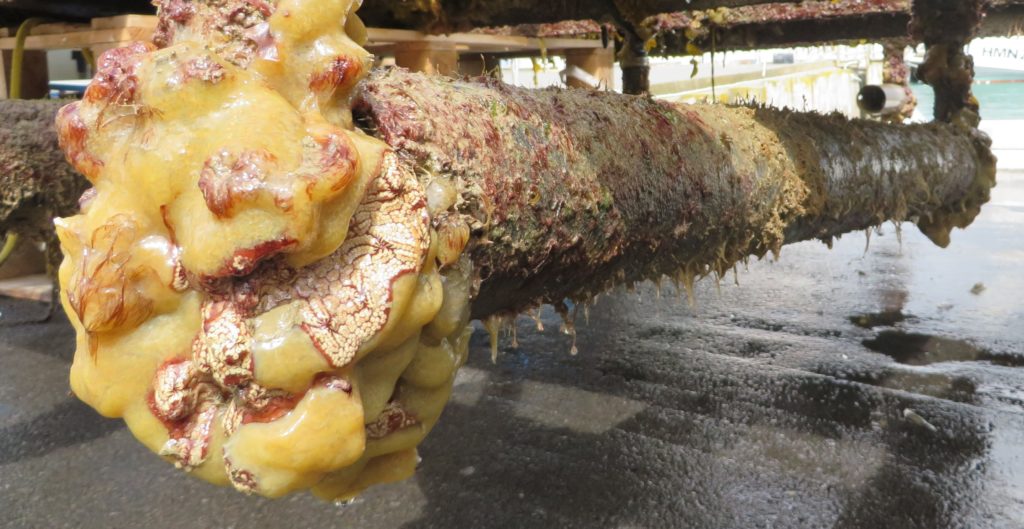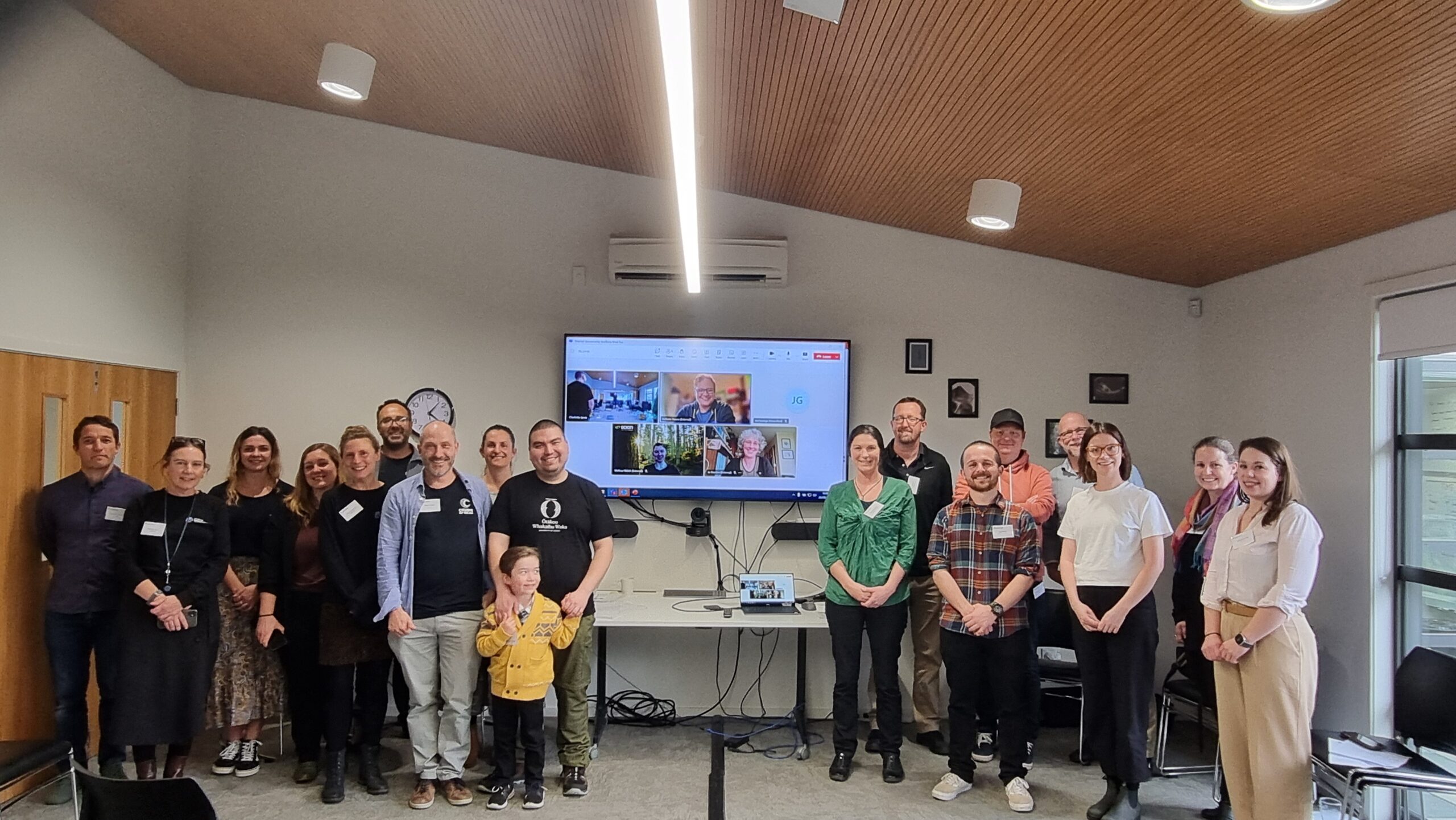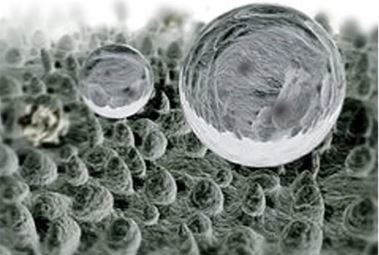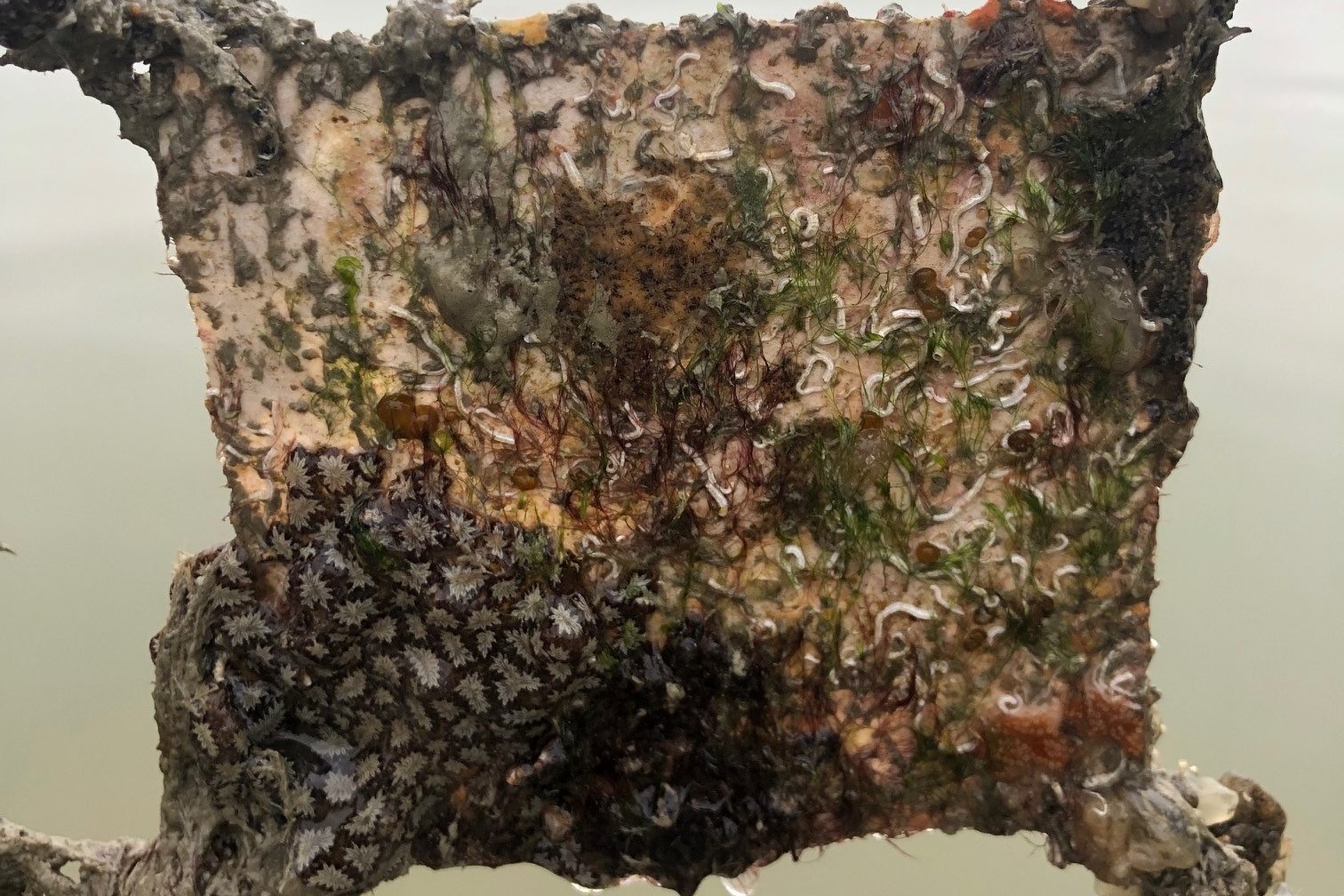We held the final AGM for the Marine Biosecurity Toolbox project, after five years of intensive research and collaborations.
Crack open the bubbles – it works!
by Grant Hopkins
Building on our foundational work with stakeholders, industry and government, our research in the PROTECT theme of the Marine Biosecurity Toolbox programme will continue to investigate whether bubble streams are effective in keeping marine artificial structures (such as marina pontoons, wharf piles and marine farms) free of nuisance biofouling critters. Why is this important? Biofouling communities that develop on artificial surfaces are usually dominated by non-indigenous species. If conditions are suitable, these introduced species can proliferate and spread to other structures (including nearby vessels) and to native habitats, resulting in increased maintenance costs and in some cases cause environmental damage.
This is not a crime novel, so I will cut to the chase – we have been able to demonstrate that bubble streams are highly effective in controlling biofouling accumulation on experimental surfaces, and we are now keenly focused on developing operational systems to deploy in New Zealand’s ports and marinas.
We have undertaken trials on vertical surfaces, flat surfaces, and on surfaces fixed at a range of angles. We have tried low, medium and high bubble flow rates; experiments in the lab and also under challenging field conditions (think Pacific oyster infested waters). We have looked at mechanisms of action from multiple angles – we needed to know how these tiny bubbles (around 1 mm in diameter) were preventing fouling organisms from settling on the surfaces. From this large body of work, we have answered most of our original questions, but along the way have been forced to consider a few more.
Under controlled conditions, we observed how bubbles moved across surfaces in various orientations so that we could estimate the shear stress being exerted onto recently settled larvae.
We are now confident that bubble streams can keep surfaces free of fouling for at least 3 months if flow rates are sufficient. There is nothing to suggest that this treatment approach could not be effective for many years. Sounds incredible right? Well here’s the catch – biofouling does not discriminate, and what we have found is that biofouling, particularly hydroids (small, stringy, stinging foulers), develop on the diffusers that are creating the bubbles and over time impede the flow of bubbles to the surfaces being treated. This results in a treatment ‘shadow’, or simply a patch on the surface where fouling begins to form. Once fouling matures, this cannot be removed by bubble streams, and it is likely to then spread across the surface. We joke that we could use diffusers to keep the diffusers free of fouling (I suspect that is what Dr Seuss would do), but hopefully there are more practical solutions available and we have a few leads on this.

Colourful yet problematic fouling on one of our cylindrical bubble diffusers. The diffuser was clean when it was installed 3 months earlier.
The other challenge we face is retrofitting bubble delivery systems to existing coastal infrastructure. The focus of the Marine Biosecurity Toolbox programme is to develop prototype systems for marina pontoons, as these structures are often implicated with new introductions of non-indigenous biofouling organisms. New Zealand has over 8000 marina berths, so we will need to consider systems that are scalable and cost effective to apply, in terms of initial installation expenses and ongoing running costs. Bellingham Marine, a global leader in design, manufacture, and construction of marinas, will be helping us with this challenge – initially with retrofit options, but also with ideas about how marina structure designs can be modified to accommodate and maximise the efficacy biofouling treatment systems.
Other research activities in the PROTECT theme of the Programme, such as the use of native grazers to control biofouling on marina pontoons, development of novel surface types that repel fouling, and the engineering of surfaces to encourage colonisation by native species, collectively work towards our goal of improving the ecological services provided by ports and marinas. It is a challenging and exciting area of research bringing together many disciplines (e.g. physics, engineering, chemistry and ecology) and viewpoints (science, industry, government, stakeholders and Iwi).
Feel free to contact Grant Hopkins if you would like to know more about this research.




Comments (0)